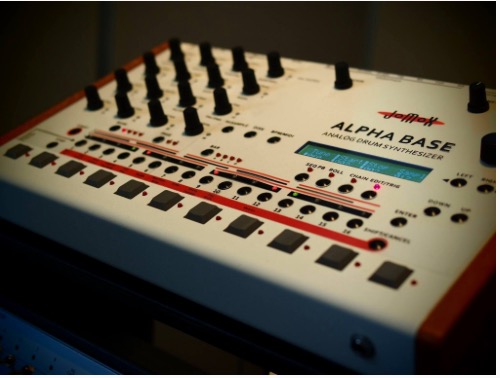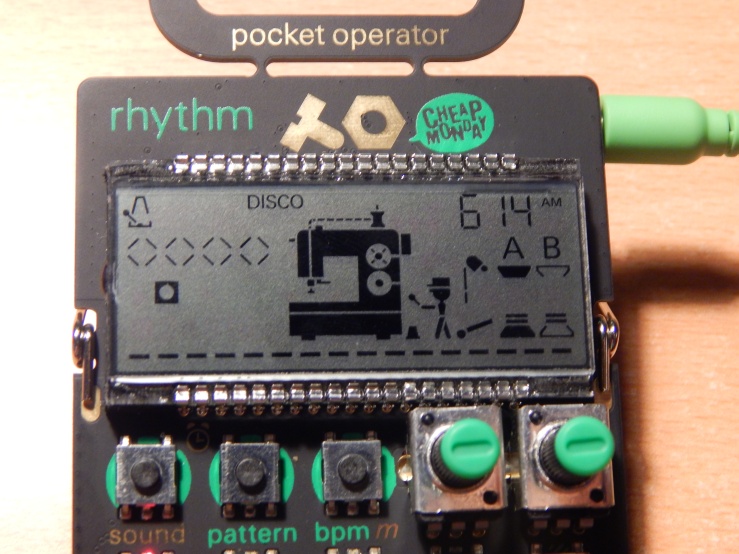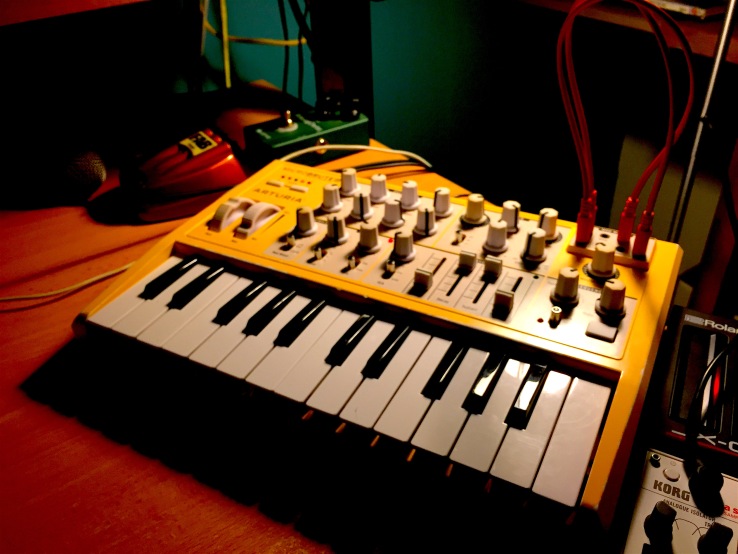This thing looks fantastic. A full LCD screen, built in effects from the famous TC Electronic, 12 voices… This will be a game changer. Watch the reveals here:
This thing looks fantastic. A full LCD screen, built in effects from the famous TC Electronic, 12 voices… This will be a game changer. Watch the reveals here:
New Moog demo! This thing sounds exactly like the original and more! For more news, stay tuned.
12 Voice Polyphonic. Just that could make this a real game changer in the synth world. Watch the final teaser here!
After the massive amount of talk created by the teaser and impending release of the Behringer synthesizer, Behringer CEO Uli Behringer said “The response for this synth has been so overwhelming that we have decided to establish a comprehensive Synthesizer Division.” in an interview with Gearslutz. This could mean big things for both Behringer as a company and the synth landscape as a whole. He also stated “Unfortunately, the [synthesizer I built] got lost in a factory move and for the past 40 years I have wanted to build a synthesizer again.” Uli obviously shows passion for the project and when more news is released it’ll be posted here.
Just posted on Facebook by Peter Drozda under the comment: (Top Secret), the picture appears to be of a prototype or finished new drum machine from the highly regarded synth company JoMoX. No other news is known besides how it looks (which by teaser standards is pretty backwards from most companies) but if anymore news is released I’ll make sure to post here!

The recent news from Moog is a surprise to some and exhilarating for anyone even remotely into synthesizers. A full scale reissue of the beyond classic 1969 MiniMoog, nothing changed besides the keyboard. This is any synthist’s dream and from what we’ve heard it sounds as mouth watering as the original.
As amazing as it looks and sounds, it also opens up the opportunity to talk about reissues and how they’ve changed the synth world in recent years. To start, I’ll define a reissue as a remake of a synth. No homages or software (Sorry Arturia).
As technology has advanced, the ability to recreate synth has become easier and easier. Until 1995, virtual analog (or VA) was only an added feature in some synths (the Roland JD-800 and D-50 both included recreations of analog oscillators). The Clavia Nord Lead was the first proclaimed virtual analog coming out in 1995. It was a hit back then leading (no pun intended) to 3 more in its line and it still holds up both look wise and sounds wise. This to me was the real start of the reissue market.
Analog isn’t cheap or easy to make compared to digital which is why companies in search of feeding off the nostalgia and the growing craze for the old analog sound turned to VA. The JP-8000 was Roland’s first venture into virtual analog. It was sleak and intuitive and (like the Nord Lead) still holds up to this day.
In the 1990s, these synths were a way for purists to escape the new landscape of black, new age digital synths (Roland D series, Korg Wavestation and so on) which dominated the market. This sense of escapism led to more and more virtual or straight up analog synths leading into the 2000s. With this rise in analog synths and renewed interest in the synths of the 70s and 80s, companies began to put money into the emulation of older synths. These sounds were included in workstations and used by artists to relive the classic synths they no longer had.
In the late 2000s and early 2010s, the analog craze was at its height and out of that came some classic recreations. From the almost sequel synth to the Prophet 5, the Prophet 6 to the almost exact copy of the ARP Odyssey, the Korg ARP Odyssey. These synths have been received to various degrees of praise but just their presence in the market points to a sad but true fact:
Most people don’t want new synths. For every inventive and new synth idea, there’s another remake or homage to a classic synth made as a cash cow for the company in question. The rise of reissues has almost led to the death of creative and intuitive synthesizers coming from large companies. The question is: Is this the future of synthesizers? Will companies turn to easy cash and tease remakes like a Transformer movie (thanks Behringer!) and throw more creative ideas to the curb? Let’s hope not.
From now on, on Thursdays, I’ll be making mini reviews of some of my favorite pieces of gear.
Today I’ll be taking a look at Teenage Engineering’s Pocket Operator Rhythm. To start off, this thing is TINY. This thing weighs less then a handful of Pringles and has the footprint similar to an early 2000s cellphone. I have used this in school when I was bored on many occasions.
The size, however, makes no intimations about the sound and playability. The ease of access to great sounds and the simple beat making makes the PO-12 a surprisingly potent drum machine, far from the toy it seems to be made out as.
To conclude, the PO-12 is one of the best valued drum machines on the market and I highly suggest you drop the $59 on it and start making beats!
Until recently, the fabled Behringer synth was merely a rumor. The occasion hoax would come and go and it seemed like the so called “Midas” synthesizer would never come to fruition. But, to everyone’s surprise, Behringer released an official teaser video just recently showing and more excitingly giving us a sample of the sounds of their new analog synthesizer.
In a world were Moog and DSI make analog synths at price points similar to the GDP of small countries, a company like Behringer (famous for affordable gear) making an analog synth is big news especially for the people (me included) who can’t afford a Moog the price of a small house. I myself am thrilled to see another company moving into the analog synth market, especially after seeing the teaser. Full size keys are a major turn on in my department and the inclusion of a second oscillator makes it even sexier.
To speculate, from what I’ve seen and heard, I have a hypothesis as to what it might be. Looking at the envelope shown and the knobs by the pitch and mod wheel, I think it could be a recreation or at least an homage to the famous Roland Juno-60. I would love to have a new Juno recreation especially if the price is right. (It of course being monophonic)
As more news comes out I’ll make sure to post it here!
As this is my first blog post; I’d like to welcome you. I hope to post consistently about a range of topics, all synthesizer related. If this sounds drab to you; this is not your place. But if you see potential interest in the world of synths; I give you the warmest of welcomes.
The Arturia MicroBrute (my Special Edition pictured here) was released in late 2013 and shocked the synth market by introducing an easily affordable analog mono synth for the common man. It’s big brother, The MiniBrute did the same 2 years prior but for a higher price and lacking a 64-step step sequencer but maintaining two oscillators and a noise generator. When I got this synth in early 2014; it was the first analog synthesizer I had ever purchased. Straight out of the box it blew my mind with it’s easy UI, easy to understand yet deep parameters and the mysterious mod matrix. Even now, 2 and a half years later; I can sit down and find a new sound which impresses me.
In my music; it has played a large role ranging from growling bass drones to soaring leads to sound effects reminiscent of an early 70s scene-fiction movie. It’s LFO is as fast as you want it or as slow as you want it. This in tandem with the filter (assigned to the LFO via the mod matrix) makes harmonically rich, creamy filter sweeps an easy patch. The LFO can also be used to sweep the Pulse Width Modulation creating a sound similar to a two oscillator mono synth.
Though it looks like a beginners synth with it’s minikeys and low price point; The Arturia MicroBrute will fulfill almost any role needed by a veteran of the synth world. The mod matrix and envelope sections provide ample room for a pro to create complex sounds. I have spent hours bent over it’s 32 knobs, switches and dials creating sounds a Moog would be proud of. This is a great example of “don’t judge a book by its cover”. Never underestimate this little guys capabilities.
Overall, I love this synth. I have drop it more than once and at one point dropped a miniature marble replica of David onto it from a high shelf. This thing is sturdy and indeed a synth that gives so much for it’s $300 price point. (and that’s for a new one!) If you are new to synths and want a place to start or just want another analog synth for your collection; The Arturia MicroBrute is the perfect synth for you!
